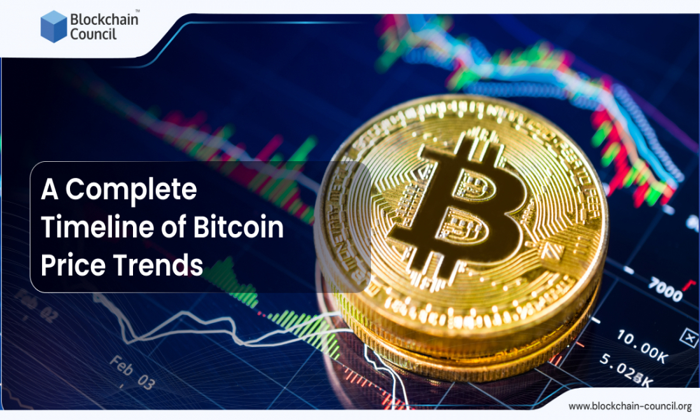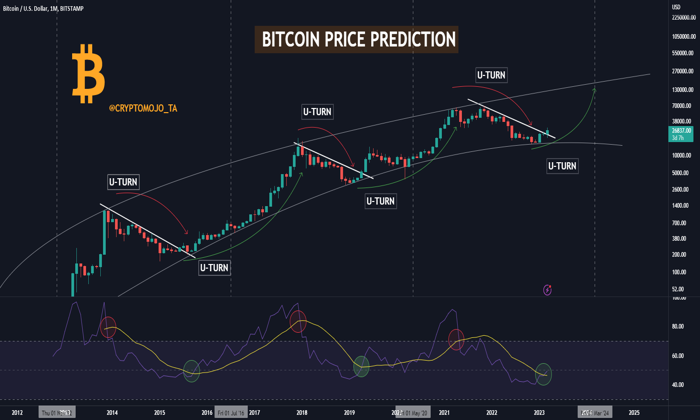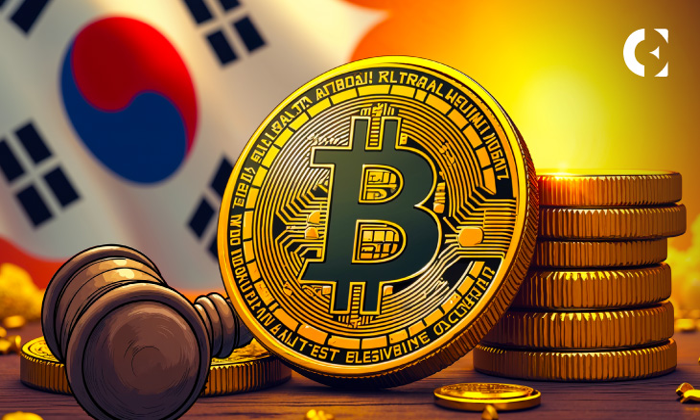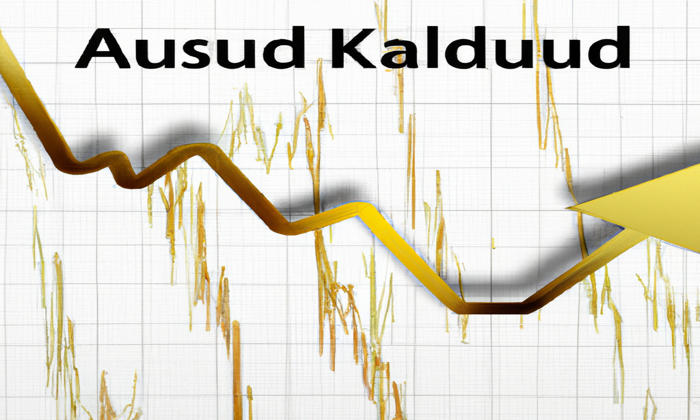Bitcoin as a meme coin has become a provocative notion in the cryptocurrency community, especially after Brian Armstrong, the CEO of Coinbase, made a bold declaration likening Bitcoin to these playful digital assets. His comments prompted discussions about the fundamental nature of cryptocurrency value, as many enthusiasts ponder the impact of social sentiment on Bitcoin’s market position. Unlike traditional currencies, which have intrinsic value, Bitcoin’s worth often hinges on collective belief, making it susceptible to the same viral trends that propel meme coins like Dogecoin and Shiba Inu. Armstrong’s comparison emphasizes the duality of Bitcoin as both a store of value and a meme-driven phenomenon, raising questions about its future in a rapidly evolving market. As Bitcoin continues to be hailed as “digital gold,” the implications of viewing it through the lens of meme culture challenge our understanding of cryptocurrency’s role in modern finance.
In the realm of digital currencies, the dialogue surrounding Bitcoin often intertwines with the concept of meme assets, prompting a reevaluation of their respective values. Brian Armstrong’s recent commentary introduces a fresh perspective, suggesting that Bitcoin’s valuation may share similarities with that of popular meme coins, which thrive on viral trends and social media influence. This notion invites a broader comparison between Bitcoin and other cryptocurrencies that have garnered attention for their whimsical origins and community-driven support. As the leading cryptocurrency, Bitcoin’s status as “digital gold” is not only about its capped supply but also its ability to resonate with the public’s imagination, much like meme coins have done. This evolving landscape of cryptocurrency value reflects a shift in how we perceive and engage with financial assets in our increasingly interconnected world.
Understanding Brian Armstrong’s Perspective on Bitcoin
Brian Armstrong, the CEO of Coinbase, has stirred considerable debate in the cryptocurrency community with his recent assertion that Bitcoin could be likened to a ‘meme coin.’ This statement has elicited a mixed response from enthusiasts and analysts alike, as it challenges the traditional perception of Bitcoin as a serious and valuable digital asset. Armstrong’s perspective emphasizes that the value of Bitcoin is largely rooted in societal trust and collective belief, rather than any intrinsic value or direct utility. This concept encourages a re-examination of how we view cryptocurrencies and raises important questions about their long-term viability and acceptance.
In making this comparison, Armstrong draws parallels between Bitcoin and traditional forms of currency like the US dollar. Just as the dollar’s value relies on public confidence rather than a physical backing, Bitcoin’s worth is similarly determined by market sentiment and collective perception. This analogy is crucial, as it helps to frame Bitcoin not just as a digital currency, but as a phenomenon that is deeply influenced by social dynamics and the viral nature of information in today’s internet age.
Bitcoin as a Meme Coin: A Controversial Comparison
The classification of Bitcoin as a ‘meme coin’ has sparked discussions about the nature of value in the cryptocurrency market. Meme coins, such as Dogecoin and Shiba Inu, often gain popularity through social media and community engagement, resulting in significant price fluctuations based on hype rather than fundamental analysis. Armstrong’s comments suggest that Bitcoin, despite its more established reputation, may also be subject to similar dynamics, where its valuation is driven by public perception and sentiment rather than intrinsic utility.
Critics argue that equating Bitcoin with meme coins undermines its status as ‘digital gold.’ Bitcoin has established itself as a leading cryptocurrency, backed by significant institutional investment and a growing acceptance among financial firms. The comparison raises concerns about the potential volatility and speculative nature of cryptocurrencies in general, suggesting that while Bitcoin enjoys a more stable reputation, it is not immune to the whims of social media and investor sentiment that characterize meme coins.
The Role of Meme Coins in the Cryptocurrency Market
Meme coins have emerged as a significant force within the cryptocurrency market, capturing the attention of investors and the media alike. These assets, often created as jokes or with no clear utility, have showcased the power of community-driven trading and social media influence. For example, Dogecoin, which started as a parody of Bitcoin, saw exponential growth in 2021, fueled by endorsements from celebrity figures and viral marketing. Such trends highlight how collective belief can dramatically shift the perceived value of a cryptocurrency.
The rise of meme coins also raises important questions about the future of cryptocurrency value. As Armstrong points out, Bitcoin’s valuation may be influenced by similar social dynamics, challenging the notion of cryptocurrencies as purely rational investments. This phenomenon invites a deeper exploration of how digital assets derive their worth in a rapidly evolving market, where sentiment and community engagement play crucial roles in driving prices and investor interest.
Bitcoin vs. Meme Coins: A Value Proposition
When comparing Bitcoin to meme coins, a critical aspect to consider is the underlying value proposition of each asset. Bitcoin is often referred to as ‘digital gold,’ serving as a store of value primarily due to its limited supply of 21 million coins and decentralized nature. In contrast, meme coins typically lack such scarcity and often depend on transient social trends for their value. This distinction underscores the importance of understanding the fundamentals behind cryptocurrencies, especially for long-term investors.
Despite the challenges posed by meme coins, Bitcoin’s established credibility remains a significant advantage. Major financial institutions, including BlackRock and Fidelity, have recognized Bitcoin’s potential, differentiating it from the speculative nature of meme coins. This institutional backing not only enhances Bitcoin’s legitimacy but also reinforces its position as a leading cryptocurrency in the market, suggesting that while meme coins may offer short-term excitement, Bitcoin is geared towards sustained growth and acceptance.
The Influence of Social Media on Cryptocurrency Value
Social media’s impact on cryptocurrency valuation cannot be overstated, particularly in the context of meme coins and Bitcoin. Platforms like Twitter and Reddit have become breeding grounds for cryptocurrency discussions, often driving trends and influencing investor sentiment. Armstrong’s reflection on Bitcoin as somewhat of a meme coin highlights how social perception can sway the market, similar to how meme coins have thrived on viral marketing and community engagement.
This phenomenon has significant implications for investors and analysts alike. The ability of social media to create hype around a specific cryptocurrency can lead to rapid price increases, as seen with Dogecoin and Shiba Inu. However, this volatility also poses risks, as sudden shifts in sentiment can result in dramatic price corrections. Therefore, understanding the dynamics of social media’s role in the cryptocurrency landscape is essential for navigating the complexities of digital asset investments.
Institutional Trust in Bitcoin and Its Implications
Institutional trust plays a crucial role in the stability and long-term growth of Bitcoin as a cryptocurrency. Unlike many meme coins, which often lack serious backing and a clear use case, Bitcoin has garnered significant confidence from major financial institutions. Companies such as BlackRock and Fidelity have integrated Bitcoin into their investment portfolios, recognizing its potential as a digital asset with sustainable value. This institutional endorsement not only legitimizes Bitcoin but also contributes to its perception as a reliable store of value.
The implications of this trust extend beyond mere investment. Institutions engaged in the Bitcoin market contribute to a more structured and regulated environment, which can help mitigate the volatility often associated with cryptocurrencies. As Bitcoin continues to lead in adoption and regulatory discussions, its position as a primary digital asset becomes more secure, distinguishing it from the speculative nature of meme coins, which often lack such institutional validation.
The Evolution of Cryptocurrency Perception
The perception of cryptocurrencies has evolved dramatically since Bitcoin’s inception. Initially viewed with skepticism, Bitcoin has transitioned into a recognized asset class, often referred to as ‘digital gold.’ However, the emergence of meme coins has introduced a new layer of complexity to this perception. As Brian Armstrong suggests, the similarities in how Bitcoin and meme coins derive value from collective belief challenge traditional notions of worth in the financial world, prompting a reassessment of what constitutes a valuable asset in the cryptocurrency space.
As the landscape evolves, the distinction between serious cryptocurrencies and meme coins becomes increasingly blurred. Investors must navigate this shifting terrain with a keen understanding of market sentiment, community engagement, and the underlying fundamentals of each asset. Armstrong’s remarks serve as a catalyst for deeper discussions about the future of cryptocurrency and the factors that will shape its valuation in an increasingly digital economy.
The Future of Bitcoin and Meme Coins
Looking ahead, the future of Bitcoin and meme coins remains uncertain, shaped by various factors such as regulatory developments, technological advancements, and shifts in investor sentiment. Bitcoin’s position as a leading cryptocurrency suggests it may continue to thrive, particularly as institutional adoption grows and more individuals recognize its potential as a store of value. However, the rise of meme coins also indicates that speculative trading and social media influence will likely persist, complicating the narrative around cryptocurrency value.
Ultimately, both Bitcoin and meme coins reflect the dynamic nature of the cryptocurrency market. As investors become more discerning, the importance of understanding the underlying fundamentals, market sentiment, and social influences will be crucial. Armstrong’s comparison of Bitcoin to meme coins serves as a reminder that while Bitcoin may have a more established reputation, it is not immune to the trends that govern the broader cryptocurrency landscape.
Frequently Asked Questions
Is Bitcoin considered a meme coin according to Brian Armstrong?
Brian Armstrong, CEO of Coinbase, suggested that Bitcoin could be viewed as ‘somewhat of a meme coin,’ emphasizing that its value relies heavily on collective belief and societal trust rather than intrinsic worth. This comparison has sparked discussions on Bitcoin’s role in the cryptocurrency space.
What does Brian Armstrong mean by Bitcoin’s value being linked to collective belief?
Armstrong highlighted that Bitcoin’s value is fundamentally based on popular belief, similar to how the US dollar’s worth is sustained by widespread acceptance. Unlike traditional assets, Bitcoin’s valuation is driven by societal perception rather than intrinsic utility.
How do meme coins compare to Bitcoin in terms of value?
Meme coins like Dogecoin and Shiba Inu have gained popularity due to social media influence and community support, often experiencing significant price surges. In contrast, Bitcoin, while also influenced by sentiment, is still viewed as a more established store of value and is often referred to as ‘digital gold’ due to its capped supply and institutional trust.
What impact did social media have on meme coins compared to Bitcoin?
Social media has played a crucial role in elevating the value of meme coins, with significant endorsements from figures like Elon Musk. This contrasts with Bitcoin, which, despite some social media influence, benefits more from institutional adoption and long-term investment strategies.
Why is Bitcoin still considered more credible than meme coins?
Bitcoin is recognized as the most established cryptocurrency, leading in institutional investment and regulatory discussions. The trust placed in Bitcoin by major financial firms and its capped supply distinguish it from typical meme coins, which often lack fundamental utility.
What does the term ‘digital gold’ mean in relation to Bitcoin?
The term ‘digital gold’ refers to Bitcoin’s role as a store of value, akin to gold in traditional finance. This designation emphasizes Bitcoin’s scarcity, decentralized nature, and its growing acceptance as a reliable asset in the cryptocurrency market.
How has Brian Armstrong’s statement influenced the perception of Bitcoin?
Armstrong’s comparison of Bitcoin to meme coins has sparked debates about how cryptocurrencies derive their value, prompting both support and criticism. Some see it as a reflection of Bitcoin’s evolving status in the digital asset landscape, while others believe it undermines its credibility as digital gold.
What are the risks of viewing Bitcoin as a meme coin?
Viewing Bitcoin as a meme coin could undermine its perceived stability and credibility, potentially affecting investor confidence. It raises concerns about treating Bitcoin as a speculative asset rather than a legitimate store of value, which may lead to increased volatility in its market performance.
How does Bitcoin’s capped supply affect its comparison to meme coins?
Bitcoin’s capped supply of 21 million coins enhances its scarcity and value proposition, differentiating it from meme coins that often have unlimited supply or minimal utility. This characteristic is key to Bitcoin’s reputation as a long-term investment and a reliable store of value.
What role do major financial firms play in Bitcoin’s credibility compared to meme coins?
The involvement of major financial firms like BlackRock and Fidelity in Bitcoin legitimizes it as a credible investment, contrasting with meme coins that typically lack institutional backing. This support reinforces Bitcoin’s status as a serious asset in the cryptocurrency market.
| Key Point | Details |
|---|---|
| Brian Armstrong’s Statement | Bitcoin could be seen as ‘somewhat of a meme coin’, sparking debate in the crypto community. |
| Value Basis | Bitcoin’s value relies on collective belief rather than intrinsic value tied to tangible assets. |
| Comparison to US Dollar | Like the dollar, Bitcoin’s value is based on societal trust rather than physical commodities. |
| Meme Coin Popularity | Meme coins like Dogecoin and Shiba Inu show how social media can influence asset value. |
| Bitcoin’s Credibility | Despite the comparison, Bitcoin remains the most recognized cryptocurrency with institutional support. |
| Critics’ Opinions | Some argue that comparing Bitcoin to meme coins undermines its status as ‘digital gold’. |
Summary
Bitcoin as a meme coin has become a topic of heated discussion following Brian Armstrong’s remarks. While his statement may seem controversial, it effectively highlights the evolving perception of cryptocurrencies and their value in the digital age. The comparison between Bitcoin and meme coins sheds light on how market sentiment and social influence play significant roles in defining the worth of digital assets. As Bitcoin continues to lead the market, it remains essential for investors and analysts to differentiate between its established credibility and the more speculative nature of meme coins.
Bitcoin as a meme coin has sparked significant debate in the cryptocurrency community, particularly following Brian Armstrong’s recent remarks. The Coinbase CEO suggested that the perceived value of Bitcoin shares similarities with meme coins, which thrive on social media buzz and collective belief rather than intrinsic value. This comparison raises intriguing questions about the nature of cryptocurrency value, especially as traditional assets like the US dollar also rely on societal trust. As Bitcoin continues to be referred to as “digital gold,” its reputation as a serious investment is juxtaposed with the lighthearted nature of meme coins like Dogecoin and Shiba Inu. This evolving discussion highlights not just Bitcoin’s standing in the market, but also its influence in shaping the future of digital currencies.
The characterization of Bitcoin as a financial novelty opens up a broader conversation about digital currencies. With terms like “digital gold” often associated with Bitcoin, its comparison to meme coins invites scrutiny of how value is perceived in the crypto landscape. The phenomenon of meme-inspired currencies, often driven by social media trends and community engagement, has gained traction, leading to increased interest from investors. This mirrors the speculative nature seen in Bitcoin, where public sentiment can dramatically impact price movements. Understanding Bitcoin in this light can help clarify its role and significance in the ever-evolving realm of cryptocurrencies.















Leave a Reply